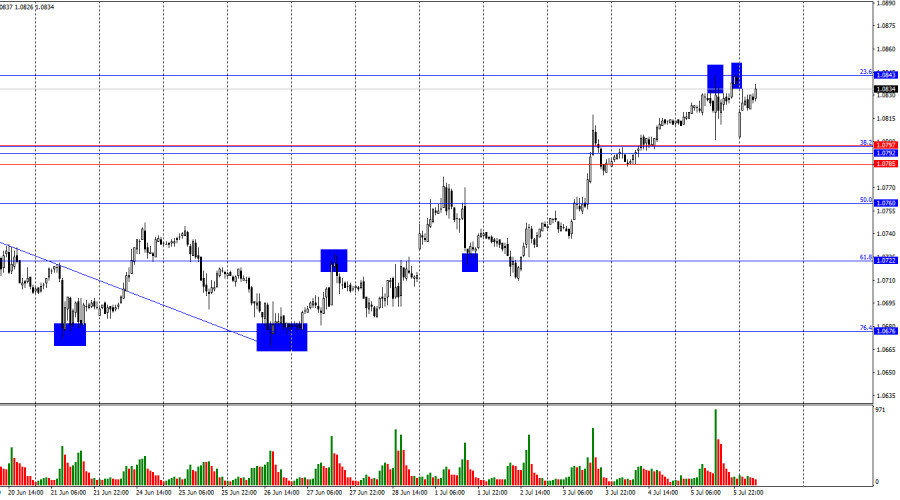EUR/USD. Will the inflation report save the US dollar?
The EUR/USD pair showed a confident rise last week. This growth of the European currency was not caused by positive news from the European Union, which has become as rare as positive data from the USA. On the contrary, the first week of each month is when important data on the labor market, vacancies, unemployment, and business activity in America are released. All these data were received last week. The pair's movement reflected their nature.

However, the last week has passed, and traders must focus on the new week. One of the key events will be the US inflation report for June on Thursday. Traders expect the headline figure to decline to 3.1% from the current 3.3%. According to their expectations, core inflation might remain unchanged at 3.4% y/y. What should traders do with these figures, and what should they expect? To answer this question, let's refer to the statistics of previous months.The headline consumer price index has declined for two consecutive months, but its decrease is so weak that it is too early to discuss a new downward trend. Inflation decreased from 3.5% in March to 3.3% in May. Previously, it had fallen to values of 3.0% and 3.1% several times, after which a new acceleration began. The market responded each time by selling the dollar. This resulted in a drop of 87 points in June and in May – 70 points. Thus, traders perceive each decline in inflation negatively. As a decrease in the consumer price index is also expected this week, it can be assumed that the dollar will again come under market pressure.Core inflation shows a slightly different dynamic. The indicator has been steadily decreasing since September 2022 and during this time it has literally accelerated only once compared to the previous month. No changes are expected by the end of June, but in the event of a drop in this indicator, this will become an additional factor in the sale of the US currency.Thus, the probability of the US dollar falling on Thursday is very high. However, the week does not consist only of Thursday; the dollar may show moderate growth in the remaining four days after last week's strong decline. The sentiment of traders will also depend on two speeches by Jerome Powell in the US Congress.Conclusion:The trend for the EUR/USD pair changed to "bullish" last week, but before continuing the growth (if the bulls have such plans), it would be good to form a corrective wave downwards. The level of 1.0843 twice prevented the bulls from moving higher on Friday; from this level, I expect a drop to the zone of 1.0785–1.0797. Before Thursday, the bears might manage to close below this zone, confirming the formation of a corrective wave downward. And on Thursday, when we are very likely to see a new decline in US inflation, the "bullish" trend may resume.What if US inflation doesn't slow down in June? Then the US currency may receive unexpected support. In recent months, the Fed has shown no signs of wanting to begin easing the PEPP. If inflation in the United States does not slow down, then this desire cannot appear. In this case, the dollar may return to 1.0676, as the ECB should not have any problems with further monetary easing. In September, the ECB might lower the rate for the second time, while the Fed may remain in a wait-and-see mode.
